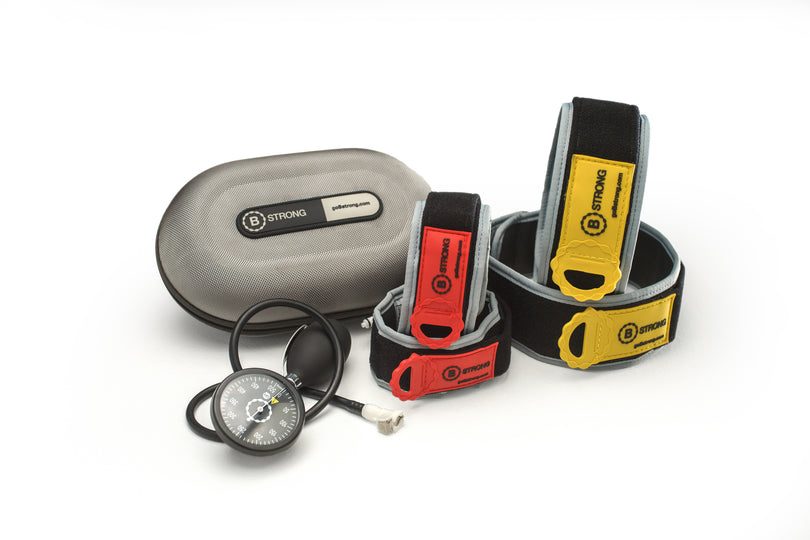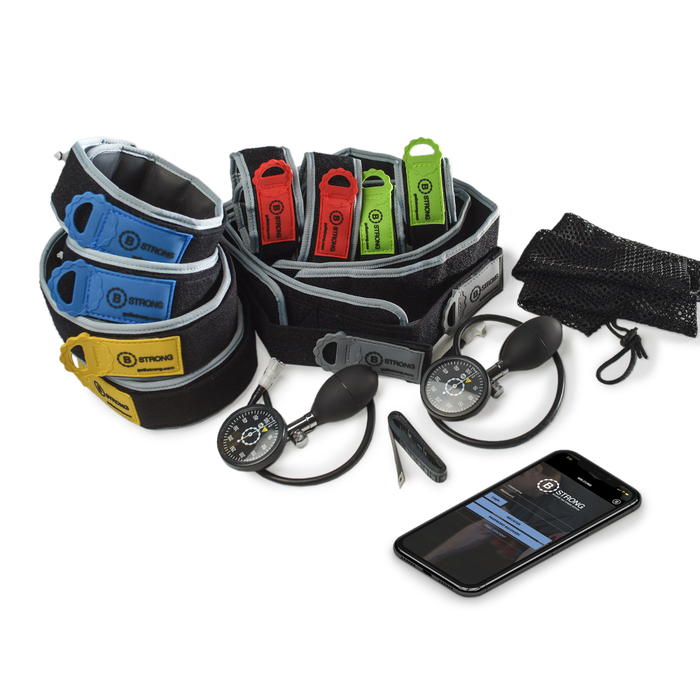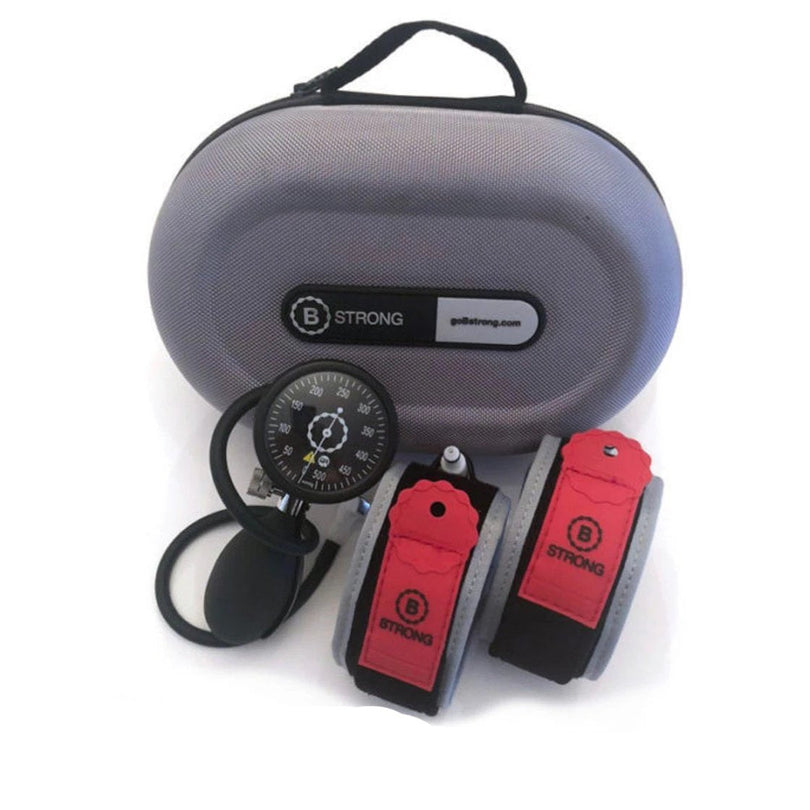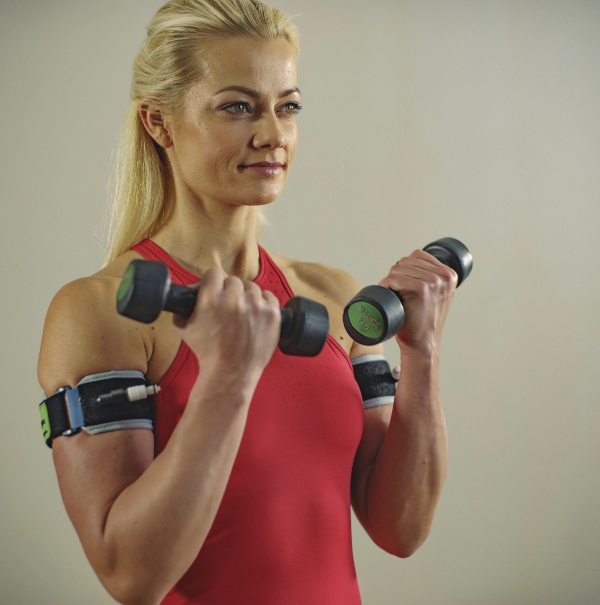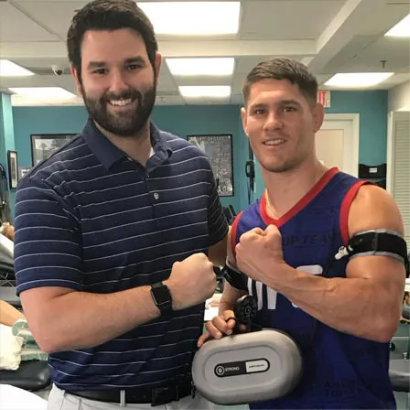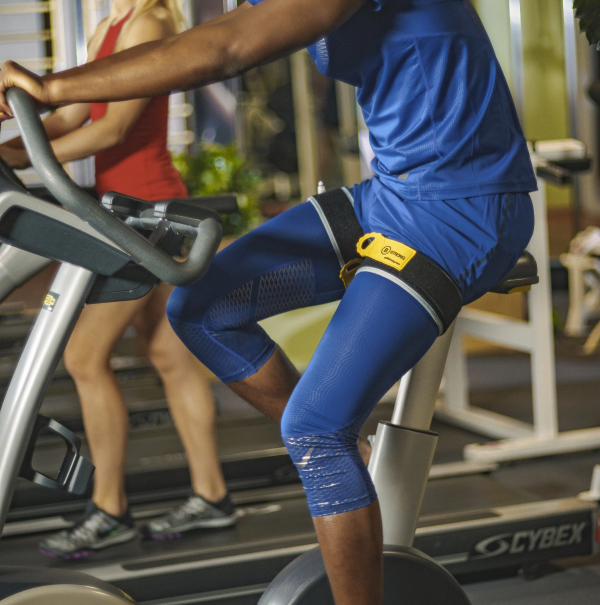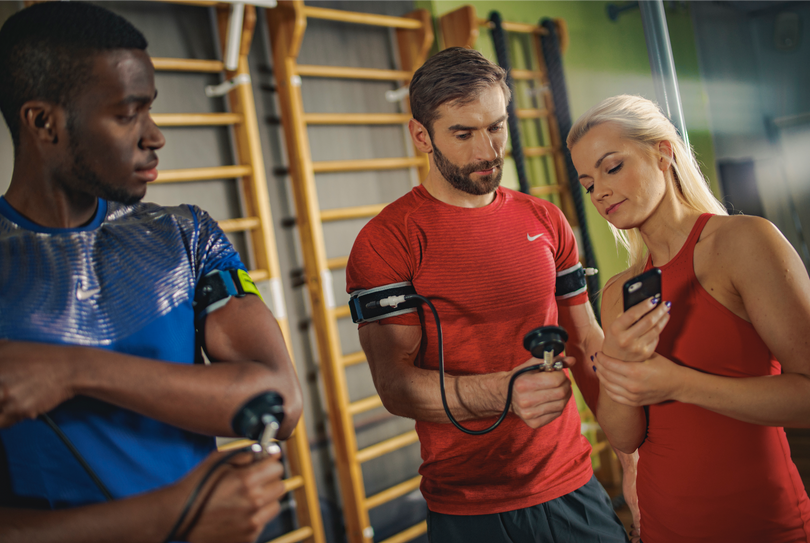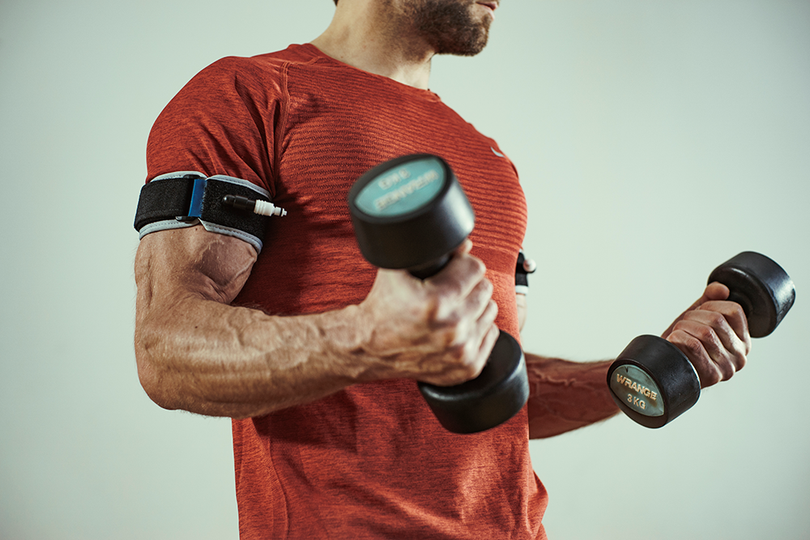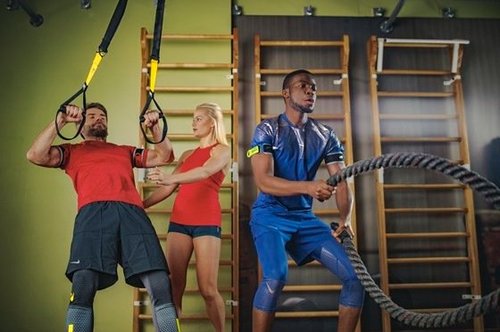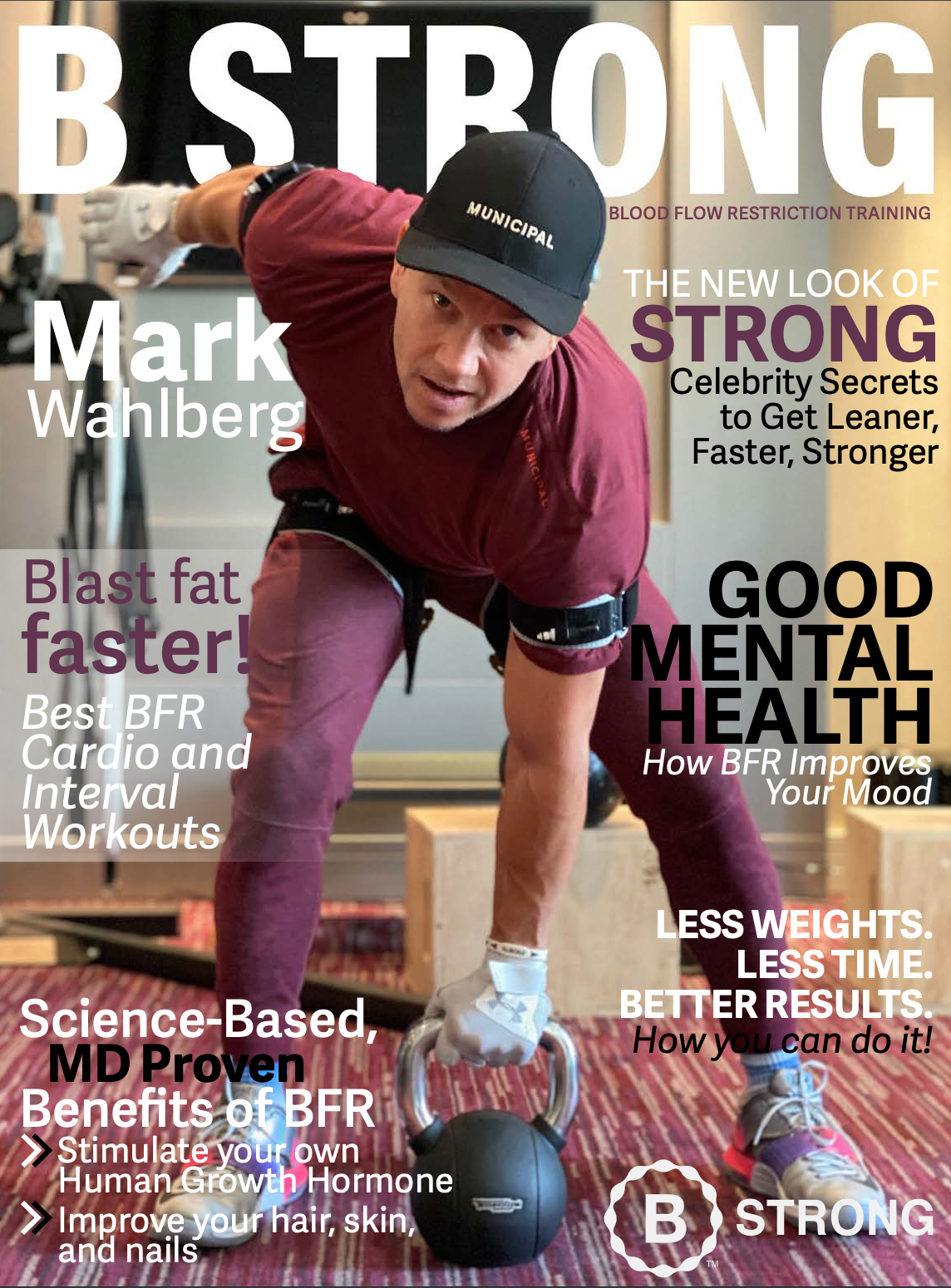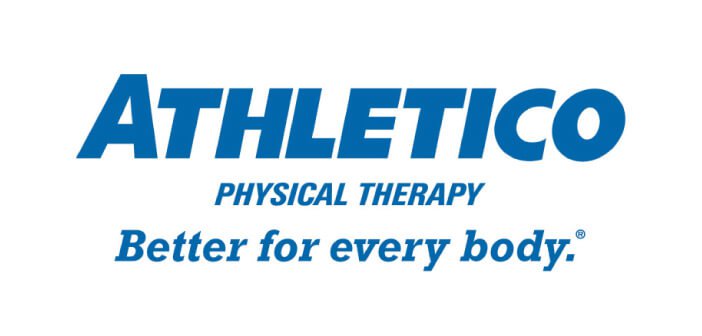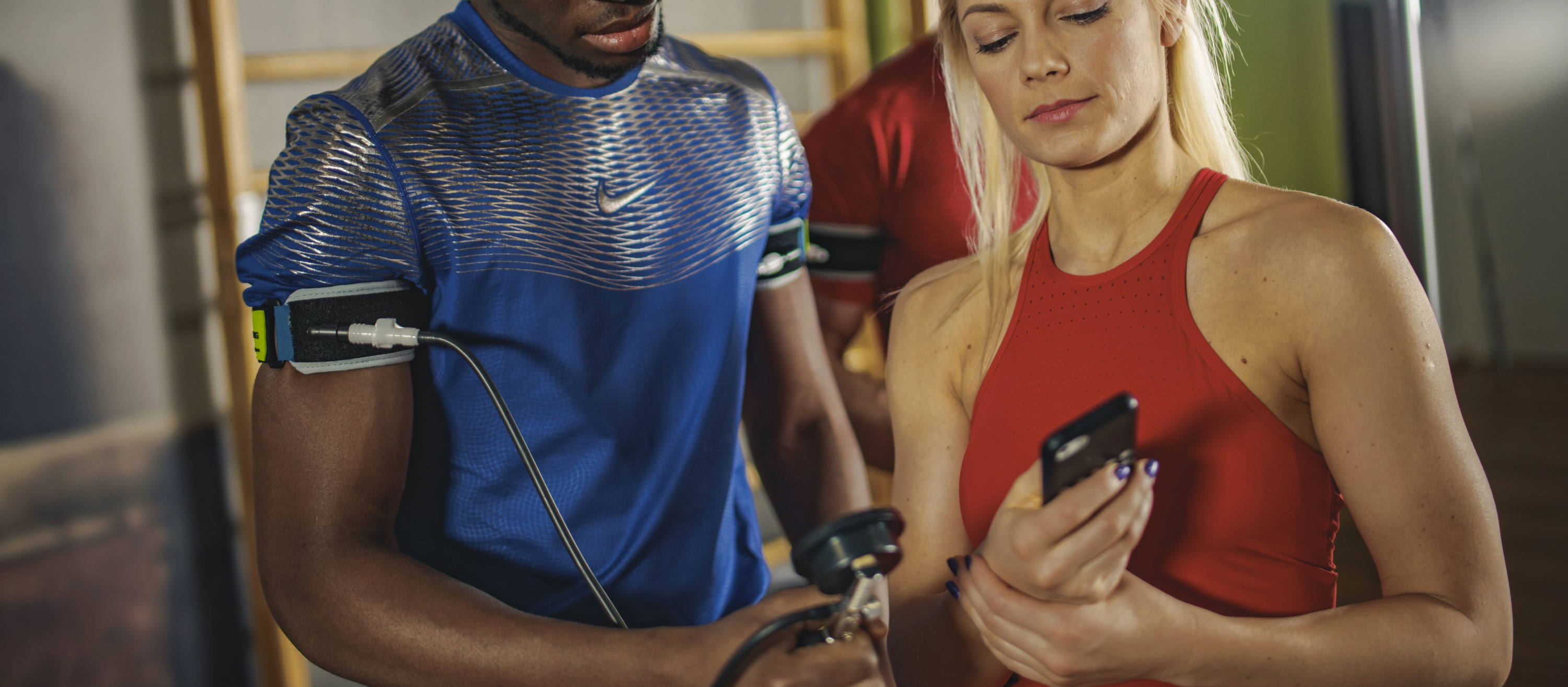Local Swimming Coach Shares His Experience with B Strong BFR BandsTM
B StrongTM recently had the opportunity to sit down with Peter Juiris, a local swimming coach who works with children. Peter has been using our B Strong BFR BandsTM for group training and wanted to share his experience. Although Peter is a swimming coach, he believes that BFR training could provide numerous benefits to those participating in other sports as well. Peter’s testimony is just one example of how blood flow restriction (BFR) training can benefit young athletes both inside and outside of the pool.
Regular Strength Training Improves Strength and Performance
Strength is extremely important to swimmers, as it prevents injury caused by repetitive motion. Regular strength training mixes up the type of repetitive motions used in the pool. This can benefit athletes in all sports. In addition to preventing injury, strength training helps athletes become faster. This is the ultimate goal of most swimmers.
During strength training, most young swimmers perform dryland exercises to build muscle strength and body weight. The level and type of dryland exercises changes as athletes’ age.
Our B Strong BFR BandsTM make it possible for athletes of all ages to perform fast twitch fiber training without doing high resistance work (i.e. heavy weights). This allows young athletes to achieve dramatic results without becoming overly tired or putting themselves at risk of muscle and joint damage.
By placing our specially designed B Strong BFR BandsTM on the upper portion of the legs or arms, young athletes can improve strength and fitness in less time and with less effort. When it comes to water-sports and swimming, BFR training can increase muscle strength and functional performance. As a rough example, swimmers can gain the same benefits from swimming ten laps with our B Strong BFR BandsTM as they can from swimming twenty without.
Peter uses our B Strong BFR BandsTM both inside and outside of the pool to help young athletes gain strength while preventing injury. This is especially important to young athletes whose bodies are still growing. Muscular and joint damage in children can have a significant effect on future performance and willingness to participate in sports.
BFR Training in a Group Setting
When used in a group setting, our B Strong BFR BandsTM create an excellent opportunity to teach young athletes the importance of regular exercise and its effects on the body. As Peter found, athletes as young as six years old could understand what they were doing and why.
Athletes work together and support each other through training. As they grow, training together motivates them to push a little harder, improving their results.
Young athletes that practice BFR training at home achieve even greater benefits in the pool, on the course, or on the field. Strength training between practices further improves performance and strength.
Please read below what Peter had to say about group training with our B Strong BFR BandsTM.
Q.)Who are you and who do you work with (ages/skill levels of the kids)?
A.)Varies. Ages 6-12.
Q.) Why were you looking to introduce BFR into your training?
A.) I liked the idea of being able to use it in a dryland cycle (which is generally body weight work) instead of weights, which get rusty. I also used BFR in the pool. As it relates to the pool, I like the idea of using it towards the end of practice, after we do high intensity, race pace work. At the end of those sets, they are tired, and this is a great way to keep fast twitch fibers engaged (when they are otherwise too tired to keep using them) without incurring muscular damage or injury that can result from high intensity work done with bad technique (resulting from being tired).
Q.)Why did you select B StrongTM?
A.) Affordability (relative to other system which are cost prohibitive) and simplicity of use.
Q.) How have you integrated BFR into the training programs for your swimmers?
A.) I use it on dryland. One example workout is: Pushups, pullups, squats, ab wheel. 30 seconds of work, 30 seconds of rest 3 sets of each then switch exercise.
The other type of dryland workout is doing things like bear crawl, crab walk, duck walk, lunges, frog jump, sidewinder. They do this on deck going around the pool. It’s continuous.
I also use BFR in the pool. A simple set is to do it for 15-20 minutes and do either 25 yards with 30 seconds rest or 50 yard swims with 30 seconds rest. This is at their pace. Whatever pace they like. The bands should make them tired, but not unbearably so. If I feel they are too impacted by the pressure, I make them get out and reduce it. Otherwise, they get pretty wiped out and I think it accumulates over time. Every kid is different.
Q.)What has been the kids’ reactions to this type of training method?
A.) Positive. They all think it benefits them. They understand what they’re doing. I explain that we’re using them to make fast twitch fibers work when otherwise they’re too tired to go hard enough to use fast twitch fibers. Also, they produce acid and I tell them that helps them get used to the feeling at the end of races and makes their body better at buffering it. That said, it takes a progression to develop a comfort level. Just like the app suggests, start low and keep an eye on them.
Q.) What kinds of results have you seen?
A) Excellent! I describe it as another tool to make a better swimmer. A carpenter can still build a house without a hammer, but will do a better job with one. One of my swimmers even set a State Meet record.
Q.)What are the main benefits you’ve gained from B StrongTM?
A.) The main benefit is to be able to do fast twitch fiber training without doing high intensity work. There is no other way to do this. It’s not a replacement for high intensity work. I think that’d be a mistake. Its additive to the high intensity work you’re already doing which enables compounded improvements.
Please contact us if you have questions about BFR training with B Strong BFR BandsTM.

